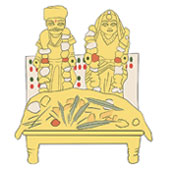Design Resource
Lost Indian Festivals
Information Visualisation of Festivals celebrated by Women in India
by
I looked at examples of cultural mapping and information mapping to understand ways of data organisation for the visualisation.
• Cultural Mapping
Cultural Mapping is a systematic approach to identifying, recording, classifying and analyzing a community’s cultural resources.
The cultural map of St. Thomas (2015) (see Fig 2) serves as a gateway for organisations, businesses, community groups and the public to easily identify and explore the city’s assets.
Fig 2. St. Thomas Cultural Map (2015)
The cultural map may consist of layers, keyword search, information window, annotation and drawing tools.
• Information Mapping
Information Mapping is writing without paragraphs. Instead, there’s a set format to guide the writer and reader along the easiest pathway to communication (Horn et al., 1974).
It involves identifying, categorizing, interrelating and sequencing, and presenting graphical information for learning and reference.
It increases reading efficiency as it can be simple, modular, an expandable classification system and consistent by using information blocks, information map, unit and course (see Fig 3).
It is used for conceptual, procedural, process, classification, structural and decision information.
Fig 3. Information Block, Information Map, Unit, Course (Horn et al., 1974)
The principles of data organisation used by these methods were used in data analysis for the final visualisation.



